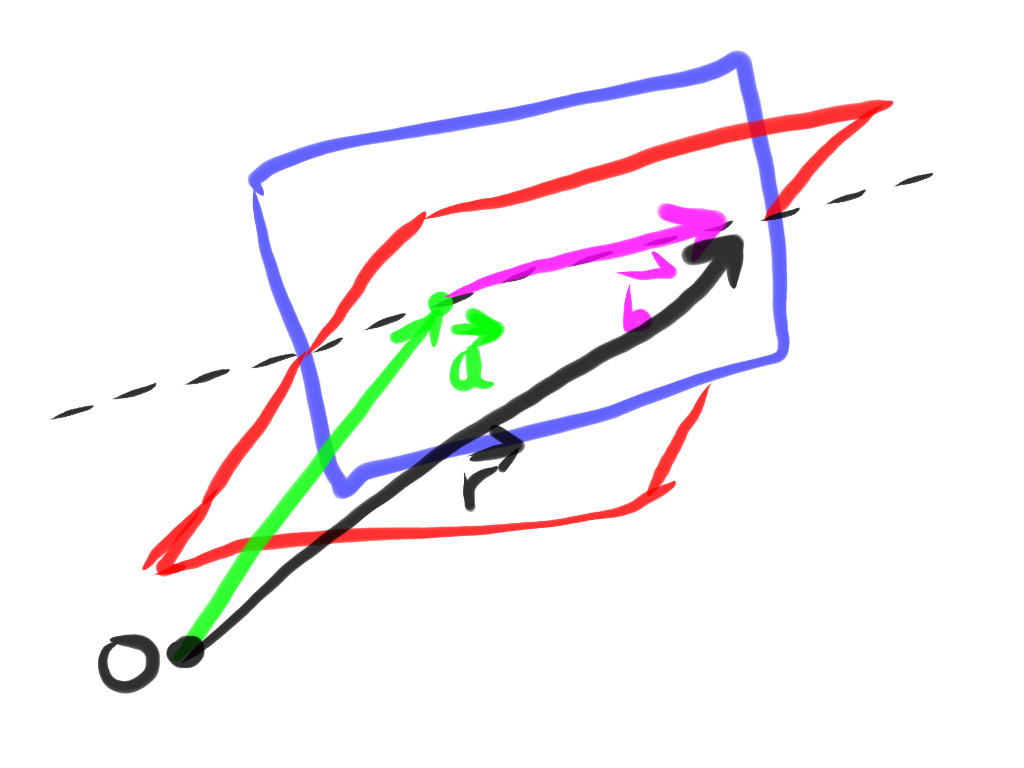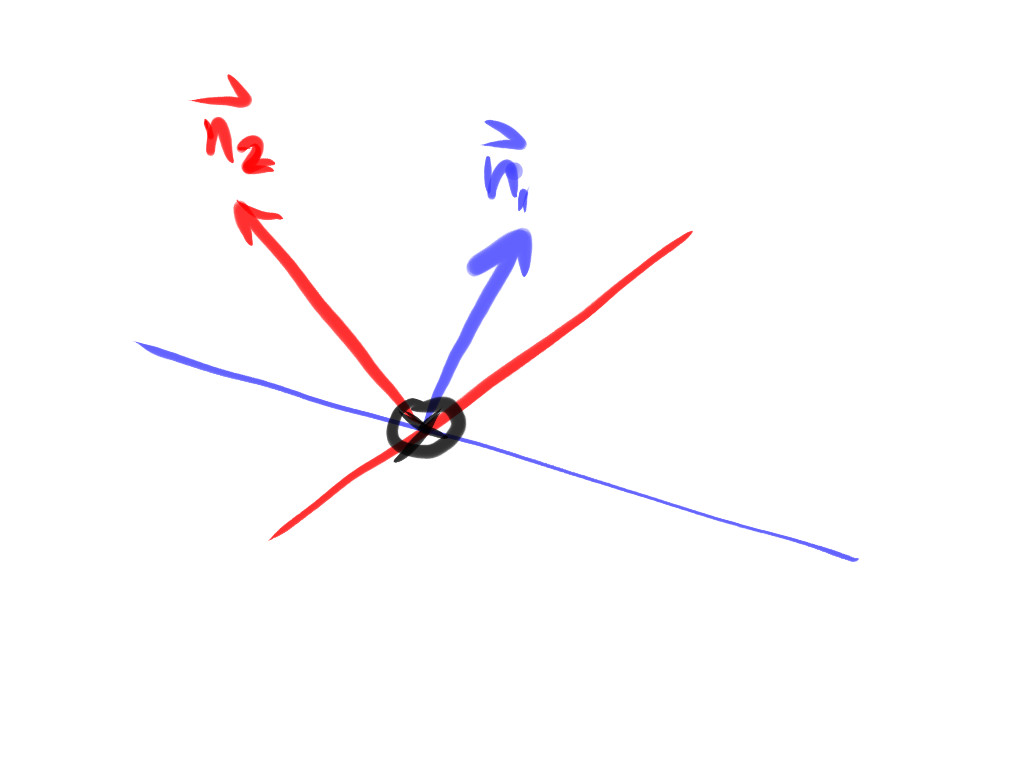How do you find parametric equations for the line of intersection of two planes 2x - 2y + z = 1, and 2x + y - 3z = 3?
1 Answer
Explanation:
for the line, we will need
A) a point that it actually passes through, say
B) a vector describing the direction in which it travels, say
....such that the line itself is

For
This means that the plane equations, namely
become
and these we solve as simultaneous equations to get
so
for
In the drawing below, we are looking right down the line of intersection, and we get an idea as to why the cross product of the normals of the red and blue planes generates a third vector, perpendicular to the normal vectors, that defines the direction of the line of intersection.

for a generalised plane
so for
and for
the cross product
so we combine this all as indicated in
There are an infinite number of ways of expressing this line.
The important bit, I guess is the method.

